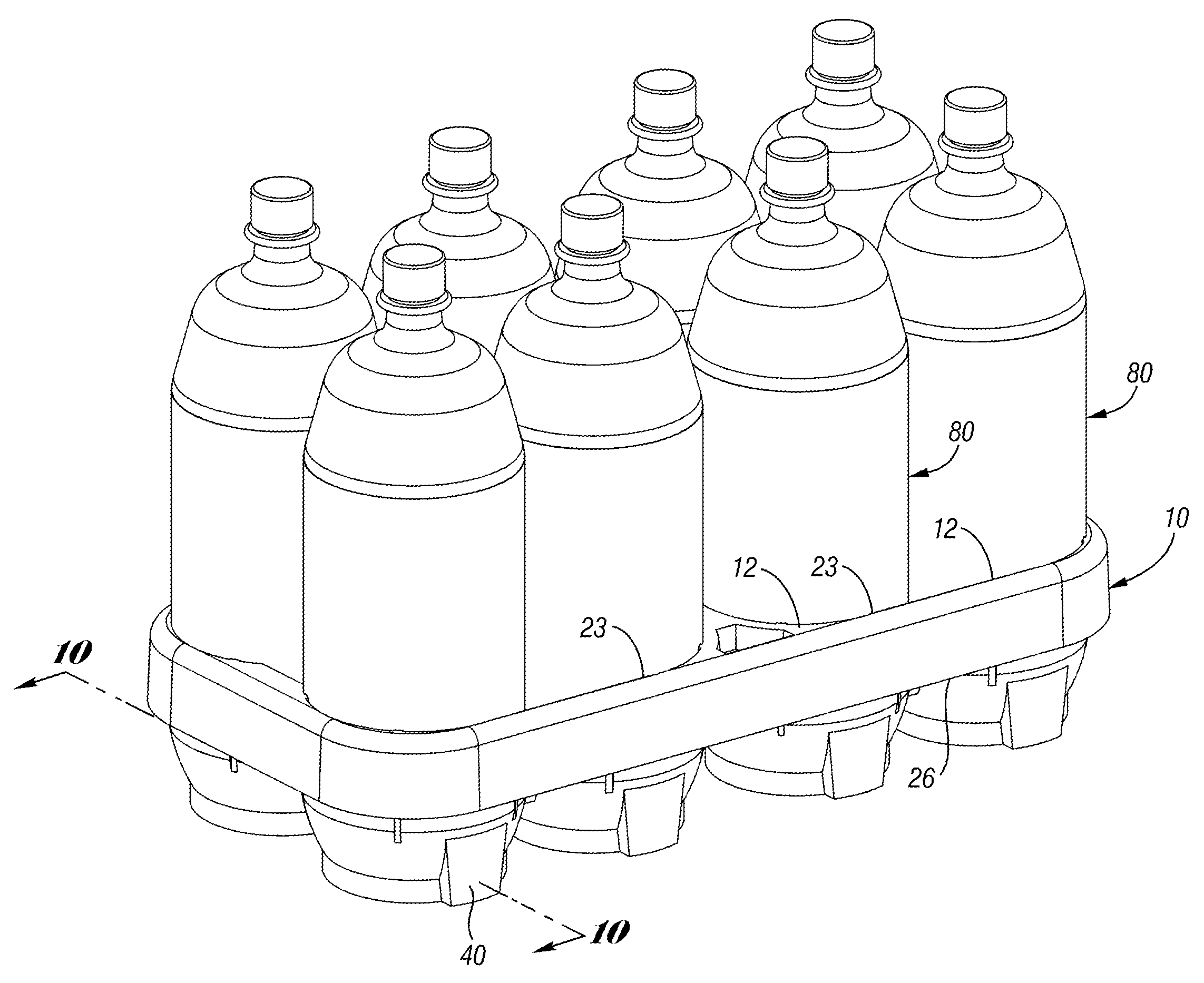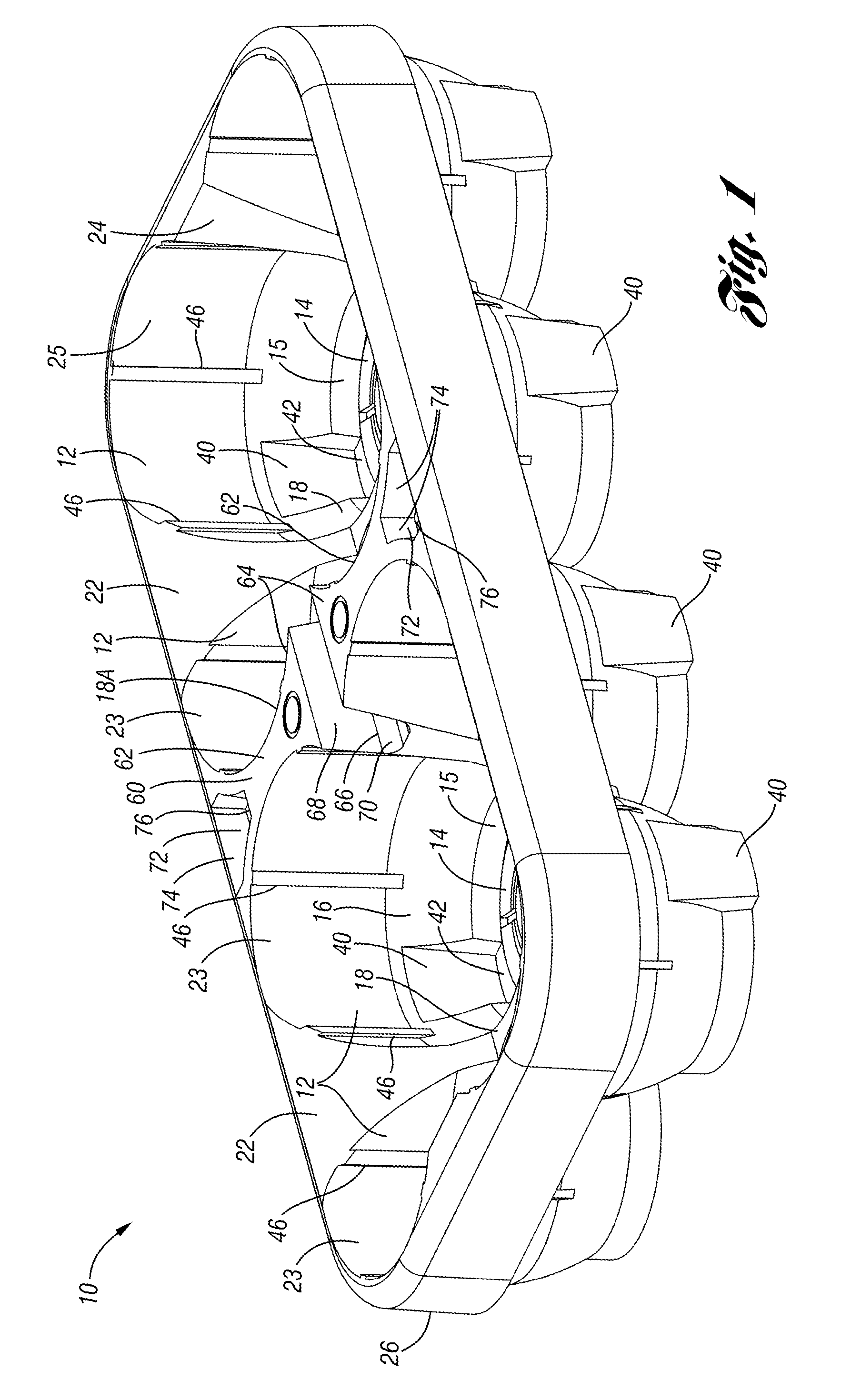Crate for containers
- Summary
- Abstract
- Description
- Claims
- Application Information
AI Technical Summary
Benefits of technology
Problems solved by technology
Method used
Image
Examples
first embodiment
[0027]A crate 10 according to the present invention is shown in FIG. 1. The crate 10 is a single thermoformed sheet having a plurality of bottle-receiving pockets 12 each defined by a bottom wall 14, an annular lower wall 15 and a generally curved annular pocket wall 16. The pockets 12 are separated by a plurality of lateral dividers 18 and a longitudinal divider 20 in a two-by-four arrangement. Although other arrangements may be utilized, the two-by-four arrangement has been generally found to be convenient for two-liter bottles.
[0028]The crate 10 further includes alternating first upper side walls 22 and second upper side walls 23. The first upper side walls 22 are generally flat and extend upward and outward from the lateral dividers 18. The second upper side walls 23 are generally concave and further define the pockets 12.
[0029]Each end of the crate 10 further includes a generally flat first upper end wall 24 extending upward and outward from the longitudinal divider 20 and gene...
second embodiment
[0045]FIG. 11 is a perspective view of a crate 110 according to the invention. The crate 110 is similar to the crate 10 of FIGS. 1-10 except as explained below or shown in the drawings. For example, the crate 110 does not include the foot portions 40 of the crate 10 (FIG. 1); however, these could optionally be included in the crate 110 as well. In particular, upper side walls 123, 125 of the crate 110 include a plurality of flexible retainers 146 protruding into the pockets 112.
[0046]FIG. 12 is a top view of the crate 110. The flexible retainers 146 protrude into the pockets 112 such that they provide a tighter fit with bottles in the pockets 112.
[0047]FIG. 13 is a side view of the crate 110. FIG. 14 is a portion of a section view taken along line A-A of FIG. 13. Referring to FIG. 14, the flexible retainers 146 are corrugated portions of the upper side portions 123, 125 that protrude into the pockets 112.
[0048]FIG. 15 is a view similar to FIG. 14 with the bottles 80 in the pockets 1...
PUM
| Property | Measurement | Unit |
|---|---|---|
| Flexibility | aaaaa | aaaaa |
| Height | aaaaa | aaaaa |
Abstract
Description
Claims
Application Information
 Login to View More
Login to View More - R&D
- Intellectual Property
- Life Sciences
- Materials
- Tech Scout
- Unparalleled Data Quality
- Higher Quality Content
- 60% Fewer Hallucinations
Browse by: Latest US Patents, China's latest patents, Technical Efficacy Thesaurus, Application Domain, Technology Topic, Popular Technical Reports.
© 2025 PatSnap. All rights reserved.Legal|Privacy policy|Modern Slavery Act Transparency Statement|Sitemap|About US| Contact US: help@patsnap.com



